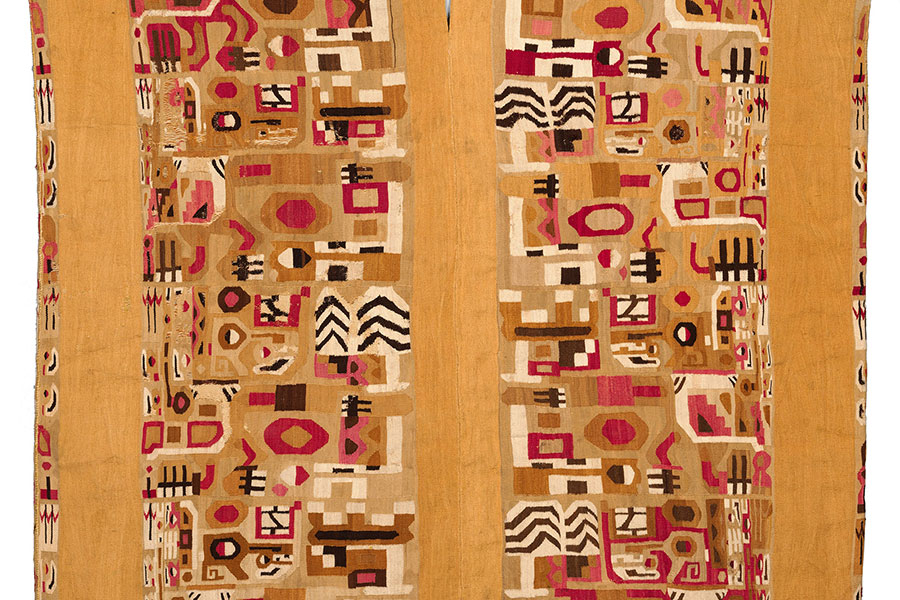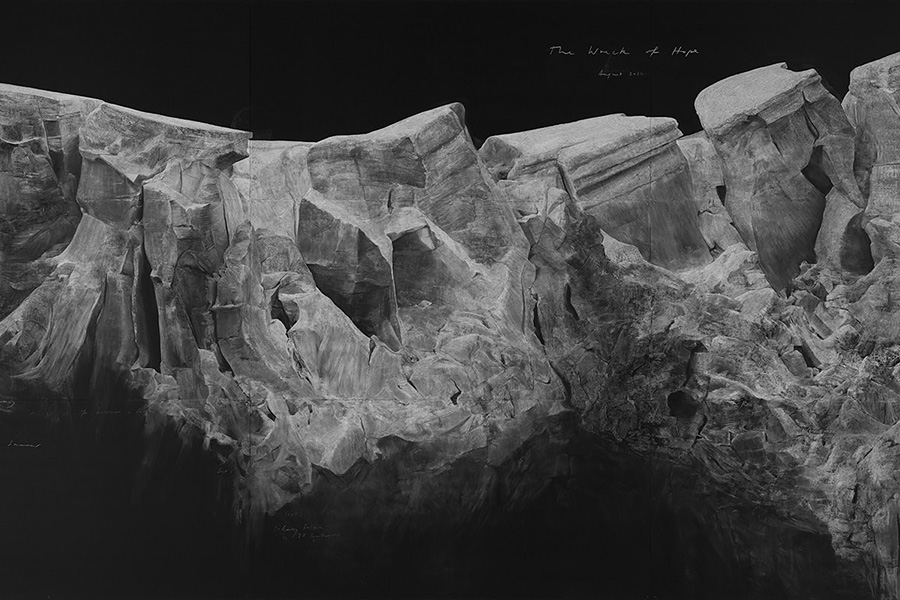A temporary move can be too successful for a cultural institution’s own good. While the Frick Collection’s Fifth Avenue premises were being renovated and expanded from 2020 until this spring, paintings and decorative objects from this beloved New York City landmark were displayed in the former home of the Whitney Museum of American Art on Madison Avenue, renamed Frick Madison for the duration. Freed from the sometimes suffocating opulence of the 1914 Beaux-Arts mansion—which was commissioned by the industrialist Henry Clay Frick from the firm of Carrère and Hastings, decorated by the pioneering interior designer Elsie de Wolfe, and retrofitted as a museum two decades later by the architect John Russell Pope—the works looked better than ever. As Colin B. Bailey wrote in these pages, their transposition into the austere setting of Marcel Breuer’s Brutalist architecture was “extraordinarily satisfying, elegant, thoughtful, and respectful at every turn.”1 Even though the Frick’s interim venue was just one block east and four blocks north, spiritually it felt light-years away.
I cannot have been alone in wishing that this provisional arrangement could somehow become permanent. For years the Frick had attempted to enlarge its facilities—contrary to a widely held misapprehension that things never change there, its holdings have more than doubled since the museum first opened in 1935—but met with repeated opposition from architectural preservation groups and residents of the Upper East Side Historic District. Those constituencies objected to what they saw as the excessive bulk of the proposed additions as well as the elimination of the small garden on the museum’s south side, deemed an essential neighborhood amenity, and the Frick was forced to abandon successive expansion plans, including a 2014 scheme by Davis Brody Bond. The newly completed version is by Selldorf Architects, the New York–based firm headed by the German-born Annabelle Selldorf, who collaborated with Beyer Blinder Belle, New York preservation specialists justly admired for their meticulous reworking of landmark structures.
In 2011 it was announced that after the Whitney decamped to its new Renzo Piano–designed structure in Manhattan’s Meatpacking District, the Breuer building would be rented to the Metropolitan Museum of Art for eight years as a satellite exhibition venue. But the Met Breuer, which opened in 2016, failed to catch on with the public and became a financial drain on its parent institution. The Frick—eager to keep its public presence alive while its galleries were closed—took over the remainder of the lease in 2020. Three years later the Whitney sold the Breuer building to Sotheby’s, which has engaged the Swiss firm of Herzog & de Meuron to convert it for use as the auction house’s international headquarters.
Buying the Breuer building might have made better financial sense for the Frick, considering that its newly completed renovation alone cost $220 million (or $330 million for the total project, including the Frick Madison interlude), more than double (or triple) the $100 million Sotheby’s reportedly paid for the old Whitney, though it would have spent additional millions for substantial alterations. And a less costly off-site expansion could have left the Frick with a sizable fund for further acquisitions, letting it take advantage of the decline in prices for old master pictures, which now often fetch less than modern and contemporary works, reflecting a seismic generational shift in taste.
Increasing the Frick’s holdings has long been constrained by the mansion’s limited exhibition space. The addition of two singularly unpleasant, low-ceilinged underground galleries in 1977 did not solve the problem. That limitation was highlighted in 2023 when the Frick announced that Assadour O. Tavitian, a trustee and a major collector of old master art, had bequeathed a single, albeit magnificent, painting—the Italian Mannerist Giovanni Battista Moroni’s haunting Portrait of a Woman—to the institution. A year later it was revealed that he had left 331 works to the Clark Art Institute in Williamstown, Massachusetts, along with $45 million for a new wing to house them. With ironic symmetry, it is being designed by Selldorf Architects. Might that trove have gone to the Frick if the Breuer building had been annexed? Idle speculation though this may be, factors such as having one’s donations on permanent display are often decisive in the final disposition of important collections. This has been proven by the extreme lengths to which museums have gone to secure prime works from potential donors, such as the Met agreeing to build a dedicated wing with reproductions of interiors from Robert Lehman’s Manhattan town house in order to land his old masters.
Even though the Frick’s artworks are esteemed for their exquisite quality and exceptional rarity, for many people the real thrill comes from viewing them amid the domestic trappings of a Gilded Age magnate. That voyeuristic impulse is considerably enhanced by the present refurbishment, which among other changes has opened the building’s second story, once the private family quarters of the Fricks, to the public for the first time, with these former sitting rooms, bedrooms, and dressing rooms pressed into service as exhibition spaces. (They had been used for offices and art conservation, operations now moved to the expanded library wing.)
The reconfiguration of the mansion’s second floor is very well done, and it strengthens this singular institution’s identity as a haven for the close contemplation of art in humanely scaled, uncrowded surroundings (an advantage guaranteed by timed admissions). Although the ceilings in the old family quarters on average are a bit less than eleven feet high (those on the ground floor are about double that) they do not feel oppressively low and certainly should not to dwellers of average New York City apartments.
As visitors ascend via the Grand Stair Hall—up the veritable scala regia that used to be tantalizingly barred to the public by a velvet rope—they encounter at the top Renoir’s full-length La Promenade, a confectionary treat that for decades was hung in a ground-floor alcove just beyond that genteel barrier. First in a clockwise circuit of the second story is the former Breakfast Room, its walls now lined with pictures by the Barbizon School painters, the mid-nineteenth-century French group that included Corot, Millet, Rousseau, and Daubigny, whose silvery-brownish landscapes became the genre that hooked nouveau riche Americans on collecting art in the decades after the Civil War. The dramatic contrast between these conservative canvases and the revolutionary redirection that electrified French art in the 1870s becomes sharper in the nearby Impressionist Room, where Manet’s The Bullfight, Degas’s The Rehearsal, and Monet’s Vétheuil in Winter provide a crash course on a movement not often associated with the Frick.
One big change has been the return of the Boucher Room—originally the private sitting room of Adelaide Childs Frick, the founder’s wife—to its original position in the southwest corner of the second story, from which it was moved in the 1930s so the public could see it downstairs. Embellished with eight canvas panels by François Boucher, the eighteenth-century French Rococo painter who never reached the poetic heights of his younger contemporary Jean-Honoré Fragonard (whose far superior Progress of Love series is installed on the first floor and had shone as never before at Frick Madison), this fussily detailed chamber is of more anthropological than aesthetic interest. It exemplifies the long-held notion among international high society that a French ancien régime pedigree somehow ennobled insipid art and ostentatious objects, an idea that gained currency among the moneyed classes thanks in part to Edith Wharton and Ogden Codman Jr.’s home furnishing guide The Decoration of Houses (1897), which elevated their Francophile preferences to the authority of holy writ.
More enriching is the Gold-Grounds Room, painted a deep cobalt color that provides the perfect counterpoint to early Italian Renaissance paintings with a matte-metallic backdrop (and figures often clothed in a similar shade of blue), a convention that prevailed in European devotional art from the Byzantine age through the fifteenth century. Among the profoundly moving treasures in this oasis of piety are two panels by the sublime Piero della Francesca: his eventful Crucifixion, slightly more than a foot square, and his contemplative St. John the Evangelist, four times that height. Along with two additional Piero panels near them, they account for more than half of the master’s seven paintings in the US, a proportion even greater than the Frick’s possession of three of the world’s thirty-four verified Vermeers.
Several familiar pictures benefit from their new placement, including Ingres’s arresting portrait of Louise de Broglie, now in the dark-paneled Walnut Room. There one can unhurriedly ponder this anatomically incorrect conundrum, with one arm protruding from the subject’s waist to make a more pleasing composition. Another memorable encounter occurs in a brocade-hung downstairs anteroom, where Moroni’s Portrait of a Woman turns her quizzical gaze on passersby and stops them in their tracks.
Unfortunately the architectural additions and modifications are notably less successful than the reinstallation of the artworks. This is first evident as one examines the expanded complex from East 70th Street, where the view north is now dominated by Selldorf’s expansion of the Frick Art Research Library wing on East 71st Street. This limestone-clad configuration—four stories high on the western portion of the property facing Central Park and nine stories tall toward the east—was given a stepped, setback profile to minimize its mass, but that tactic draws more attention by seeming so effortful.
The library wing overlooks the 70th Street Garden, created by the eminent British landscape architect Russell Page in 1977. Its threatened removal spurred opposition to the 2014 proposal, which would have filled that sixty-by-eighty-five-foot plot with a six-story addition. To avoid further controversy, Selldorf retained the much-loved mini-landscape, although it had to be dug up in order to construct the new subterranean auditorium beneath it. The grassy plot, peripheral shrubs and trees, and oblong reflecting pool have been restored to Page’s original specifications by Lynden B. Miller, a specialist in public garden design.
Selldorf’s tendency toward a chilly minimalism is clearest in this part of the scheme. She was apparently trying to harmonize with the Frick’s Classical aesthetic while at the same time asserting her Modernist credentials, but she succeeds at neither, and in places her design feels uncomfortably reminiscent of 1930s Fascist architecture. Selldorf herself acknowledged the influence of that style in a 2008 interview with Ricky Clifton in Pin-Up that is posted on the Selldorf firm’s website:
Clifton: All that early 1930s early fascist stuff. To me that’s just great. And I can see elements of that in your [New York gallery] project for Hauser & Wirth—the doorway, for example.
Selldorf: Yes, absolutely. Of course, that’s where a lot of influences came from, too.
At the expanded Frick, one can see a strong likeness between the expansion’s new north- and south-facing elevations and the German architect Eduard Jobst Siedler’s office annex of 1928–1930 for the Reich Chancellery in Berlin, which Hitler used until Albert Speer’s vast extension was completed nine years later. Although Siedler’s scheme was executed during the Weimar Republic, its pared-down, neotraditional aesthetic—with regularly spaced rectangular windows set flush into an unornamented stone exterior—presaged the strict Stripped Classicism of Nazi architecture. This is not to say that Selldorf used Siedler’s Reich Chancellery as a model. There are bas-relief lintels above the ground-floor windows of her extension, vestiges of an earlier Frick expansion. But the parallels to conservative German precedents are striking enough to suggest a design process that arrived at similar outcomes through differing motivations.
Indeed, that south-facing elevation is interrupted by a narrow International Style steel-and-glass-paneled segment much like the façade of Ludwig Mies van der Rohe’s Seagram Building of 1954–1958 in New York. There, in 1997, Selldorf installed one of her earliest schemes: offices for the German automobile manufacturer Daimler-Benz, an International Style arrangement that combined classic Mies and Le Corbusier furniture designs with a rigor that echoed the expensive perfectionism of the client’s product.
Entering the Frick via the old vestibule, one turns to the right and moves into the new twenty-seven-by-fifty-one-foot Reception Hall, which likewise is convincing neither as a modern interpretation of Classicism nor as an expression of classic Modernism. Although this bland oblong space benefits from three arched French windows that overlook the 70th Street Garden, its walls and floor are encased in so much featureless beige stone that it resembles a posh mortuary. The two rows of metal-and-glass lanterns suspended from the ceiling do nothing to dispel the lifeless atmosphere, and the room fairly begs for some humanizing touches—wall-hugging benches, busts on pedestals, trees in Versailles planters, old Flemish tapestries—anything to give it a welcoming aura. (A pair of large, freestanding circular settees upholstered in a dusty blue fabric—a mid-Victorian form that Selldorf modernizes here—are shown in Frick publicity photos of the Reception Hall, but they are removed for press events, openings, and other large gatherings.)
Comic relief is provided by the astounding cantilevered stairway at the northern end of the Reception Hall, which leads up to the new second-floor café and gift shop, and down to the new auditorium. Slathered on every surface with a busily veined two-tone marble and encircled by a shiny glass, brass, and bronze balustrade, this vulgar concoction brings to mind the go-for-broke aesthetic of the architect-decorator Peter Marino, today’s undisputed king of top-tier commercial glitz.
Another unfortunate change at the Frick has been the loss of the old elliptical Music Room, which adjoined the mansion’s skylit Garden Court and was used for lectures as well as recitals. (Some critics have claimed—perhaps to justify the Music Room’s destruction—that its acoustics were awful, but if so, why was the space so sought after by first-rate classical musicians for decades?) The space has been converted into a flexible series of galleries for temporary exhibition, which were still incomplete for the press preview. The Music Room has been replaced by a below-ground auditorium that seats 218 (a nearly 50 percent increase in capacity). The large subterranean lobby that adjoins it is yet another architectural dud. Almost featureless save for recessed ceiling lights in a concentric, mandala-like pattern (vaguely like the skylight in the mansion’s Oval Room), this beige-on-beige nonentity lacks the slightest design interest and could be part of a “function” suite in any American chain hotel.
The new Stephen A. Schwarzman Auditorium, a biomorphically contoured off-white volume, is executed in a free-form manner that falls somewhere between a refined Art Nouveau sinuousness and the cavelike recesses of Studio Gang’s recent Richard Gilder Center for Science, Education, and Innovation at New York’s American Museum of Natural History.2 However, the ethereal quality that Selldorf seems to have sought here is subverted by the obtrusive electrical equipment hanging from the ceiling, a daunting array of heavy black metal lighting fixtures suspended from three large brackets—two semicircular, one linear—that hover menacingly overhead like an alien spacecraft. Such exposed apparatus would be appropriate in a 1970s black box theater, but here it ought to have been played down or partially concealed. And what is the purpose of the feebly zigzag-patterned, quasi–Art Deco metal railings installed against the walls on both curving sides of the auditorium and leading down toward the stage? They merely add to the mixed stylistic metaphors—among multiple needless distractions in a place where the audience’s attention should instead be focused on the presentation at hand.
Selldorf occupies the same approximate place in today’s architectural hierarchy enjoyed by Renzo Piano early in the millennium, when he was the architect most often chosen by museums in search of reliable results that could stand the test of time. Whether or not that is possible to determine in advance is open to question, but in recent years art world clients have flocked to Selldorf as to no other member of her generation. Although there is a natural propensity for architects to specialize in specific categories—and a herd instinct among patrons who follow their peers and feel safer with a firm that has already executed whatever sort of building they are seeking—Selldorf has virtually cornered the present-day market for institutional, commercial, and private art galleries. (She has another, rather less glamorous specialty in municipal waste treatment plants, several of which she has designed for New York City with commendable distinction.)
Annabelle Selldorf was born in Cologne in 1960 to Herbert Selldorf, an architect and furniture designer whose family name was originally Seligmann, and Dorothea Selldorf, an interior designer. They worked for Vica, an interior design and retail company founded in 1950 by his mother, Ludovica Selldorf, which created furniture and decor that Annabelle Selldorf has described as “very sort of haute bourgeois with a modernist slant.” Those tidy, unassertive designs were markedly more modest than the overscale furnishings typical of Third Reich interiors and mirrored the cultural tentativeness of West Germany in the immediate postwar period. (In 2004 Selldorf revived the Vica brand, which now produces her parents’ chairs as well as her own original designs.) She has credited her father’s ability to change the entire tone of an existing structure through small but incisive alterations—as he did in the Cologne house the family bought in 1972—as a significant influence on her own practice, which favors low-key interventions over bold sculptural gestures of the sort that brought fame to Frank Gehry, Santiago Calatrava, and Zaha Hadid.
Although Selldorf did not plan on becoming an architect until her teens, her lackluster secondary school grades precluded acceptance at a German architecture school, and at nineteen she moved to New York City. While she attended Brooklyn’s Pratt Institute, she worked in the New York office of Richard Gluckman, admired by art professionals for his adept conversions of disused industrial structures into sympathetic exhibition spaces. For a brief period he was the go-to architect for the high-end contemporary art world, a clientele that in due course Selldorf attracted.
She graduated in 1985 and set up her own office three years later, but her big break did not come until 2001 with the opening of the Neue Galerie, her much-admired remodeling of a Beaux-Arts mansion on Fifth Avenue’s Museum Mile for the cosmetics heir Ronald Lauder’s collection of early-twentieth-century Austrian and German art. Her almost imperceptible renovation toned down the building’s second-rate ritziness, played up the variegated marble veneers of its high-ceilinged salons, and turned it into a plausible simulacrum of a Viennese Stadtpalais hospitable to the patron’s Klimts, Schieles, and Beckmanns. Just as happened with Piano’s Menil Collection of 1982–1986 in Houston, the Neue Galerie instantly captured the art world’s imagination and led to a host of new jobs for its architect.
Selldorf’s works have included studios for the artists Jeff Koons, Eric Fischl, and April Gornik, multiple gallery and installation commissions for three of today’s four so-called art megadealers—Gagosian, David Zwirner, and Hauser & Wirth—as well as a town house on New York’s Upper East Side for Larry Gagosian and another for Zwirner in the East Village. She has also designed extensions or renovations for the Clark Art Institute, the Hirshhorn Museum in Washington, D.C., the Art Gallery of Ontario in Toronto, the Museum of Contemporary Art San Diego in La Jolla, and London’s National Gallery.
The last two of those commissions have been embroiled in controversy, not least because they both involved additions designed by Robert Venturi and Denise Scott Brown. The once sacrosanct ethical prohibition against an architect destroying the work of a living coprofessional no longer pertains, as was demonstrated in 2014 when Diller Scofidio + Renfro’s MoMA expansion did away with Tod Williams and Billie Tsien’s American Folk Art Museum to allow for a seamless new 53rd Street façade.3 But Williams and Tsien lost any claim to the moral high ground when two years later Charles Moore’s Hood Museum of Art at Dartmouth was largely demolished—and its façade completely obliterated—for their new gallery building.
There were those—myself included—who viewed the American Folk Art Museum as a more grievous loss. That sliding scale of outrage arguably also applies to gauging the seriousness of Selldorf’s double assault on Venturi and Scott Brown’s built legacy. Their 1996 remodeling of Irving Gill’s Scripps house of 1915–1916 in La Jolla, which had become a museum decades earlier, may not have been the couple’s finest work, but it was preferable to Selldorf’s flat-footed evocation of midcentury Modernism that now prevails there.
Much more damaging is what Selldorf has done to Venturi and Scott Brown’s Sainsbury Wing of 1986–1991 at the National Gallery, which will reopen to the public in May. In 2022 eight former presidents of the Royal Institute of British Architects signed an open letter that condemned her firm’s plan, which they claimed
inappropriately changes a finely conceived space into an airport lounge…. It feels as if the architect is trying to jam a modern building into the guts of the Sainsbury Wing and wholly change its character.
Officials of the National Gallery are to blame for initiating the project, which began in 2018 when they shifted the main public entrance to the museum from the piano nobile of the original William Wilkins building of 1832–1838 to the Sainsbury Wing, which opens at ground level. Present-day concerns about accessibility prompted the change, since the former entrance required ascending a flight of stairs beneath the multistory portico facing Trafalgar Square. However, an alternative solution that would have created a new entrance directly from the sidewalk into the Wilkins building was not implemented, likely because critical opinion on Venturi and Scott Brown’s design has always been sharply divided, and its quirky character was deemed expendable.
Although the Sainsbury Wing is sufficiently esteemed to have been designated a Grade I listed building—Britain’s highest landmark rating—its interiors are not protected, and Venturi and Scott Brown’s carefully considered entry sequence has been butchered. Making the structure a more efficient machine for processing huge numbers of visitors was the rationale for this destructive decision, but one of Britain’s finest public buildings of the late twentieth century has been severely compromised.
Happily nothing that egregious has occurred at the reinvigorated Frick, and the best one can say about it is that the essential character of this cultural treasure remains intact. Some of the less felicitous aspects of the scheme can be improved with makeshift solutions, like some softening elements in the Reception Hall, while others, such as the auditorium and its lobby, will fade into insignificance among one’s more positive impressions of a visit there. The transformation of the mansion’s second-story rooms into galleries is praiseworthy by any measure and can justify the entire undertaking. Our ability to commune with the Frick’s extraordinary works of art in an atmosphere of luxury, calm, and voluptuousness—increasingly rare qualities in these times of museum gigantism, overtourism, and “immersive” pseudo-art events—remains blissfully unchanged, a democratic miracle that allows each of us to enjoy the fruits of being a tycoon without having to go to the trouble of becoming one.





















 English (US) ·
English (US) ·